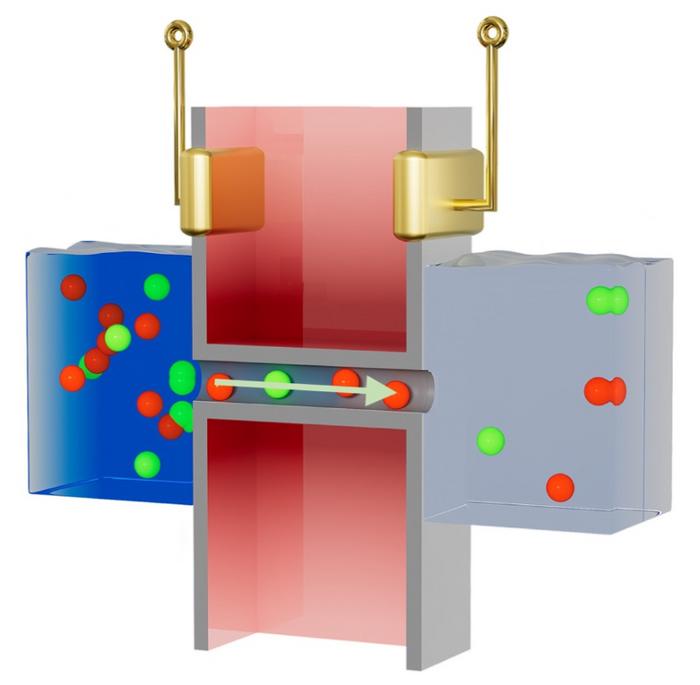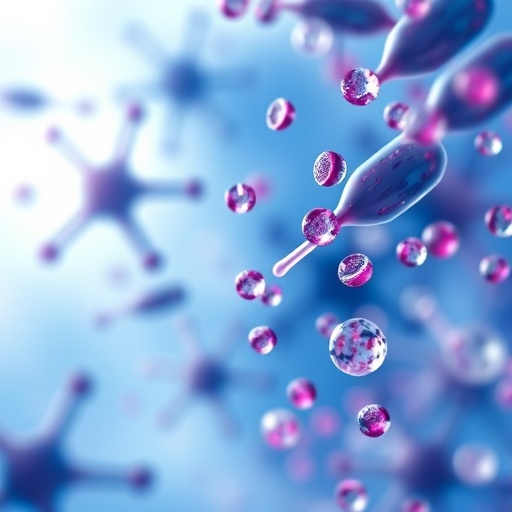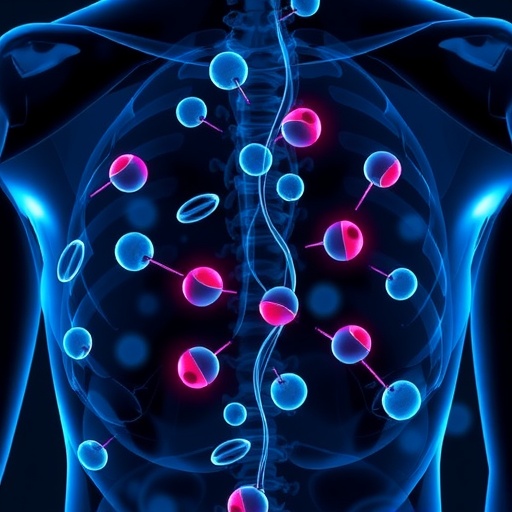There is a largely untapped energy source along the world’s coastlines: the difference in salinity between seawater and freshwater. A new nanodevice can harness this difference to generate power.

Credit: The Grainger College of Engineering at University of Illinois Urbana-Champaign
There is a largely untapped energy source along the world’s coastlines: the difference in salinity between seawater and freshwater. A new nanodevice can harness this difference to generate power.
A team of researchers at the University of Illinois Urbana-Champaign has reported a design for a nanofluidic device capable of converting ionic flow into usable electric power in the journal Nano Energy. The team believes that their device could be used to extract power from the natural ionic flows at seawater-freshwater boundaries.
“While our design is still a concept at this stage, it is quite versatile and already shows strong potential for energy applications,” said Jean-Pierre Leburton, a U. of I. professor of electrical & computer engineering and the project lead. “It began with an academic question – ‘Can a nanoscale solid-state device extract energy from ionic flow?’ – but our design exceeded our expectations and surprised us in many ways.”
When two bodies of water with different salinity meet, such as where a river empties into an ocean, salt molecules naturally flow from higher concentration to lower concentration. The energy of these flows can be harvested because they consist of electrically charged particles called ions that form from the dissolved salt.
Leburton’s group designed a nanoscale semiconductor device that takes advantage of a phenomenon called “Coulomb drag” between flowing ions and electric charges in the device. When the ions flow through a narrow channel in the device, electric forces cause the device charges to move from one side to the other creating voltage and electric current.
The researchers found two surprising behaviors when they simulated their device. First, while they expected that Coulomb drag would primarily occur through the attractive force between opposite electric charges, the simulations indicated that the device works equally well if the electric forces are repulsive. Both positively and negatively charged ions contribute to drag.
“Just as noteworthy, our study indicates that there is an amplification effect” said Mingye Xiong, a graduate student in Leburton’s group and the study’s lead author. “Since the moving ions are so massive compared to the device charges, the ions impart large amounts of momentum to the charges, amplifying the underlying current.”
The researchers also found that these effects are independent of the specific channel configuration as well as the choice of materials, provided the channel diameter is narrow enough to ensure proximity between the ions and the charges.
The researchers are in the process of patenting their findings, and they are studying how arrays of these devices could scale for practical power generation.
“We believe that the power density of a device array could meet or exceed that of solar cells,” Leburton said. “And that’s not to mention the potential applications in other fields like biomedical sensing and nanofluidics.”
***
Kewei Song also contributed to this work.
The researchers’ article, “Ionic coulomb drag in nanofluidic semiconductor channels for energy harvest,” is available online. DOI: 10.1016/j.nanoen.2023.108860
Journal
Nano Energy
DOI
10.1016/j.nanoen.2023.108860
Article Title
Ionic coulomb drag in nanofluidic semiconductor channels for energy harvest
Article Publication Date
3-Sep-2023




